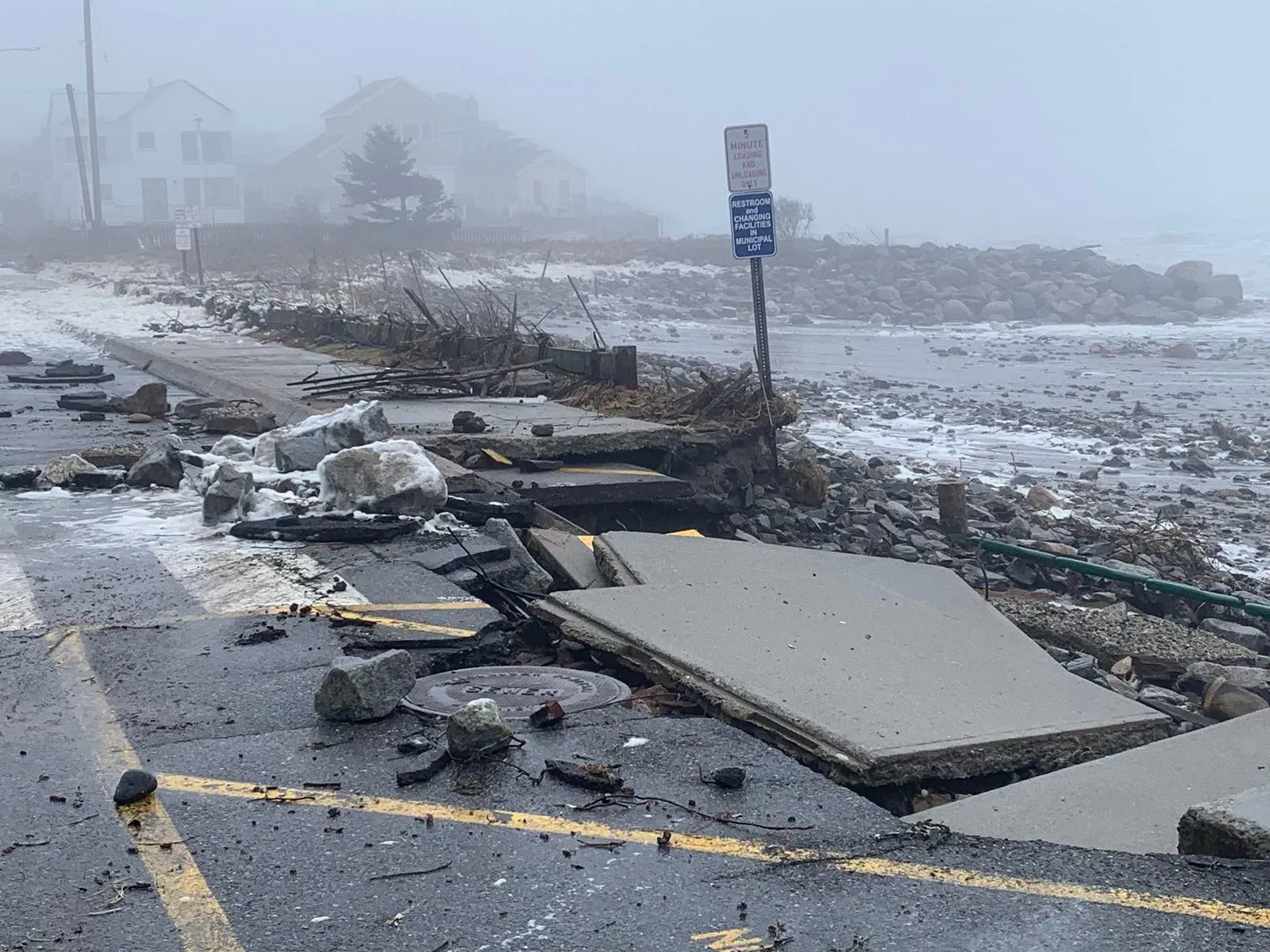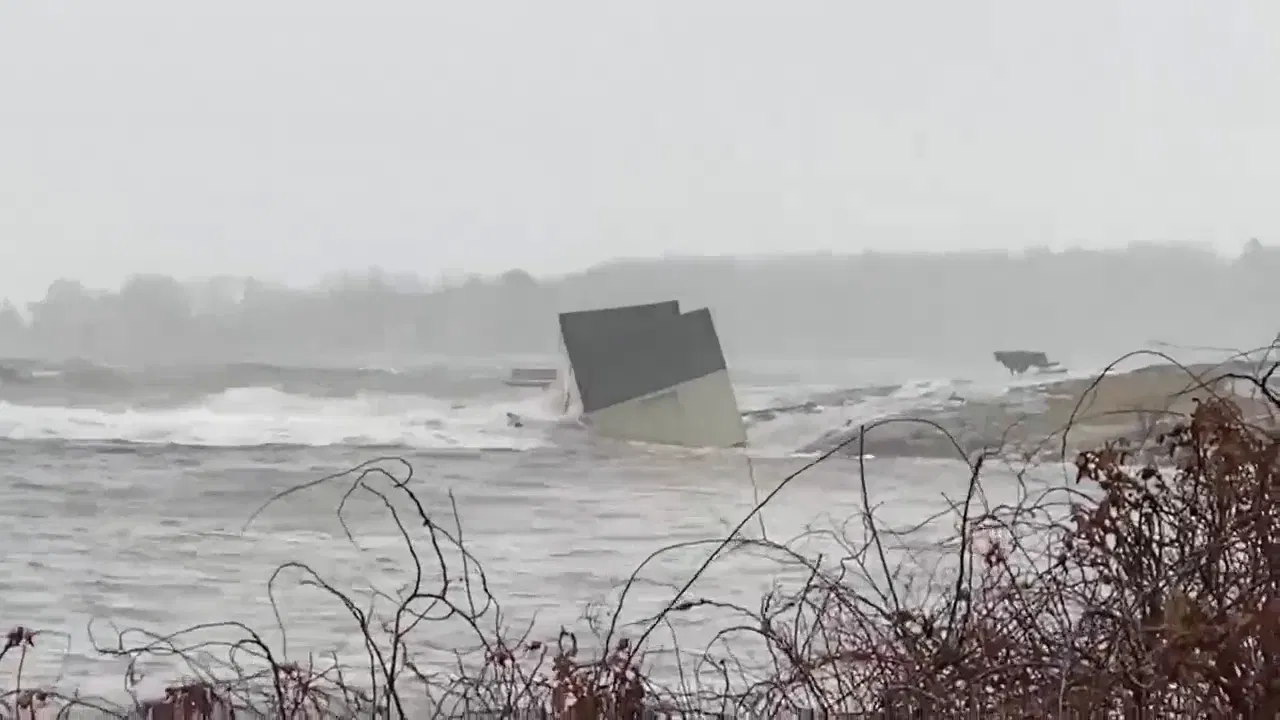It's been a rather wet and stormy stretch for New England for the past several months. Since the beginning of last year, there have been several notable or significant weather-related events across New England. Since April 30th, 2023, a total of nine major disaster declarations have been approved by FEMA across New England with two more pending and one denied.
Many of these storms have been flood related. The first major disaster declaration came to Maine after a storm dropped up to a month's worth of rain on parts of the state from April 30-May 1. Both river and flash flooding became a major issue with this storm as it became a cutoff low. Rainfall totals across New England added up to 2-4 inches with parts of Maine seeing up to five inches. This led to numerous road washouts across Maine and New Hampshire.

This spring storm would serve as a preview to what would become a very wet summer. Multiple severe weather events brought flash flooding and wind damage (both straight-line and tornadic). In a showing of just how flood-filled the summer was for New England, the National Weather Service office of Gray, Maine issued a total of 38 flash flood warnings for New Hampshire in July. This not only shatters the old monthly record of 17, but actually surpasses the most warnings issued in an entire year, which was 36.
Disaster declarations for summer thunderstorms include events in late June, mid to late July, early August and mid September. All of these events produced flooding and wind damage. The mid September event also includes tornadoes that struck Rhode Island. This major disaster declaration was not approved until January 7th, 2024. Rhode Island did not seek a major disaster declaration for the August 18th storms that spawned an EF-2 tornado.

In that same stretch of weather in mid September came a devastating flood in Leominster, Massachusetts. On September 11th, over nine inches of rain was reported to have fallen on the city after a stalled frontal boundary led to a stalled storm. Massachusetts sought a major disaster for this event, however, it was denied by FEMA in mid February.
This is the only major disaster declaration to be denied by FEMA in this time frame. FEMA stated that the damage inflicted by the floods was not outside the means of the state to handle. Massachusetts' governor has written a letter to the White House and FEMA appealing the decision, saying "the needs far outpace our available resources."
Outside of severe thunderstorms, a slow-moving frontal boundary brought over nine inches of rain to parts of Vermont in mid July. This storm created a historic flood event that is on par with the state's other great floods, including Irene in 2011, which drew many comparisons.

The stormy weather continued beyond this past summer with significant storms striking in mid December and mid January. In December, a major storm brought widespread flooding and wind damage. Maine was hit especially hard from this storm, with the USGS stating that the flooding was likely the second worst in the state's history.

The state also saw well over 400,00 power outages with New England as a whole seeing around 750,000. Flooding and wind damage was widespread across the region. Maine, New Hampshire and Vermont all received a major disaster declaration for this storm.
A month after the December storms, two back to back storms brought more flooding rains, damaging winds and historic coastal flooding. Coastal flooding in Portland, Maine set a new all time record for the city, surpassing the Blizzard of '78's mark. Significant damage was seen up and down the coast of Maine through northern Massachusetts.
Damage along Maine's coast on January 13. Credits: WGME; Michelle Erskine
The storm also led to widespread wind damage and power outages in Vermont from a downslope wind event. A gust up to 86mph was reported in Middlebury, Vermont. The storm also brought a widespread 1-3 inches of rain, leading to inland flooding as well. Both Maine and Vermont have filed for major disaster declarations. As of March 15th, both declarations remain under review and are pending.
Since the beginning of 2023, nine major disaster declarations have been for New England (as each state needs to file a separate declaration). There have been a total of 81 of these declarations made across the United States in this time frame. Maine's historic coastal flooding event in mid January will likely bring the number up to 10 in due time.



Comments